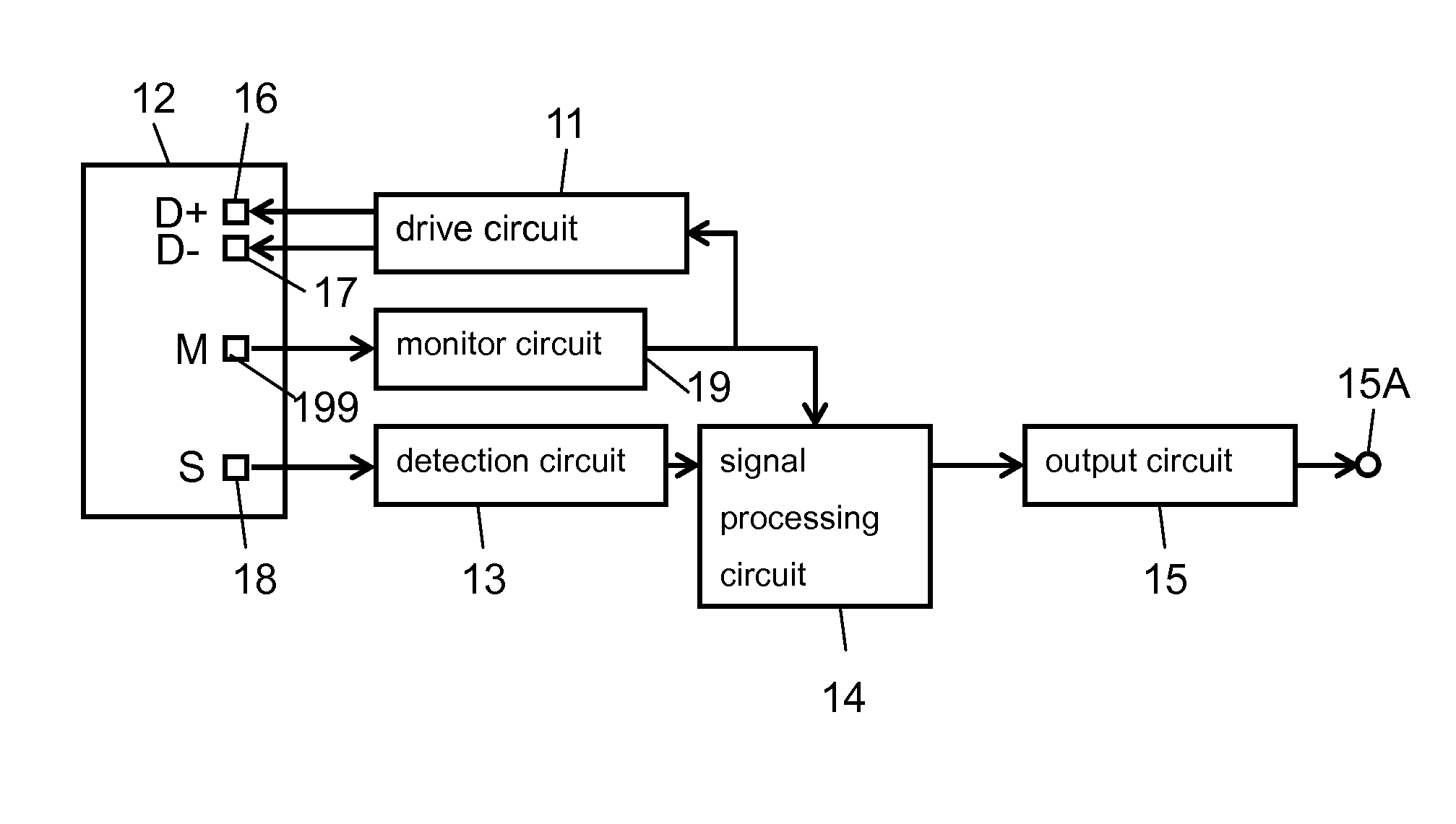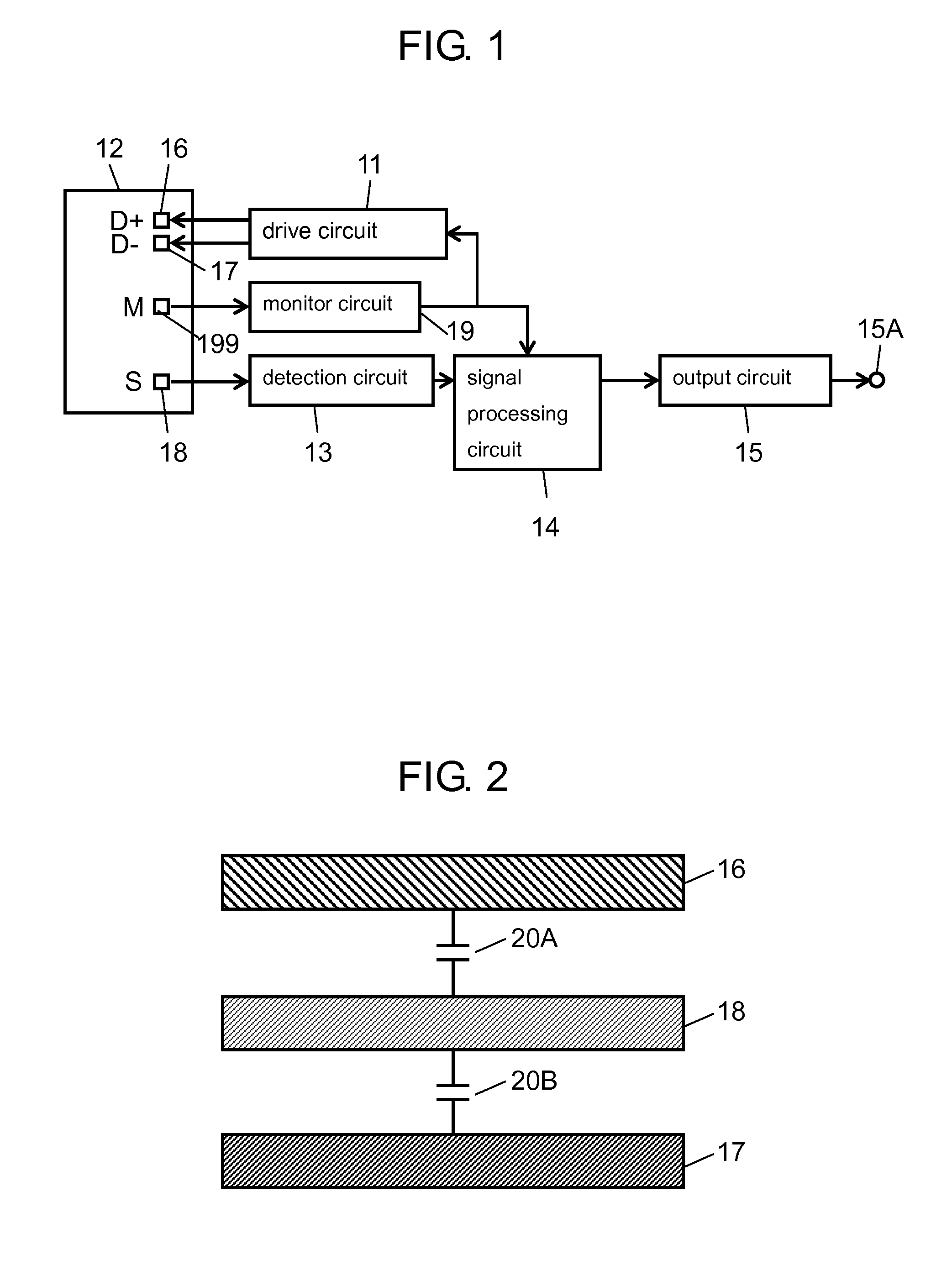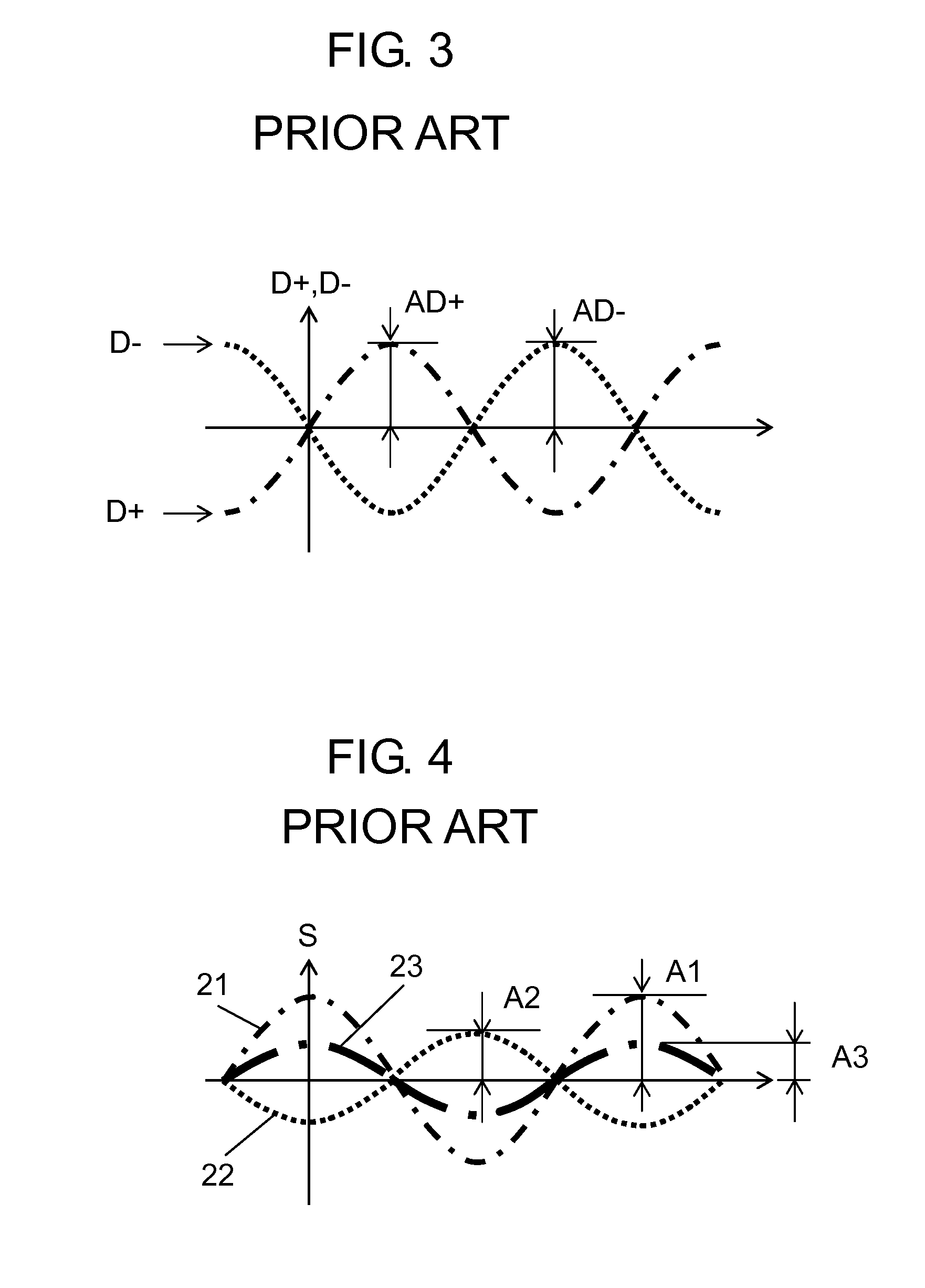Angular velocity sensor
a technology of angular velocity and sensing signal, which is applied in the direction of acceleration measurement using interia forces, turn-sensitive devices, instruments, etc., can solve the problems of low and achieve efficient offset and improve the detection accuracy of angular velocity sensing signal.
- Summary
- Abstract
- Description
- Claims
- Application Information
AI Technical Summary
Benefits of technology
Problems solved by technology
Method used
Image
Examples
Embodiment Construction
Exemplary Embodiment
[0020]An angular velocity sensor according to an exemplary embodiment of the present invention will be described as follows with reference to drawings.
[0021]FIG. 1 is an electrical diagram of the angular velocity sensor according to the exemplary embodiment. FIG. 2 shows first and second driving electrodes and a sensing electrode in the angular velocity sensor when viewed from the above.
[0022]The angular velocity sensor includes drive circuit 11, detection device 12, and detection circuit 13. Detection device 12 vibrates in response to drive signals from drive circuit 11. Detection circuit 13 extracts a response signal from sensing electrode 18 of detection device 12, and outputs the signal. The sensor further includes signal processing circuit 14 and output circuit 15. Signal processing circuit 14 extracts an angular velocity sensing signal from the response signal and outputs the angular velocity sensing signal. Output circuit 15 includes output terminal 15A th...
PUM
 Login to View More
Login to View More Abstract
Description
Claims
Application Information
 Login to View More
Login to View More - R&D
- Intellectual Property
- Life Sciences
- Materials
- Tech Scout
- Unparalleled Data Quality
- Higher Quality Content
- 60% Fewer Hallucinations
Browse by: Latest US Patents, China's latest patents, Technical Efficacy Thesaurus, Application Domain, Technology Topic, Popular Technical Reports.
© 2025 PatSnap. All rights reserved.Legal|Privacy policy|Modern Slavery Act Transparency Statement|Sitemap|About US| Contact US: help@patsnap.com



